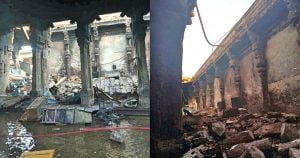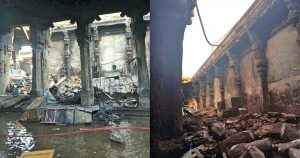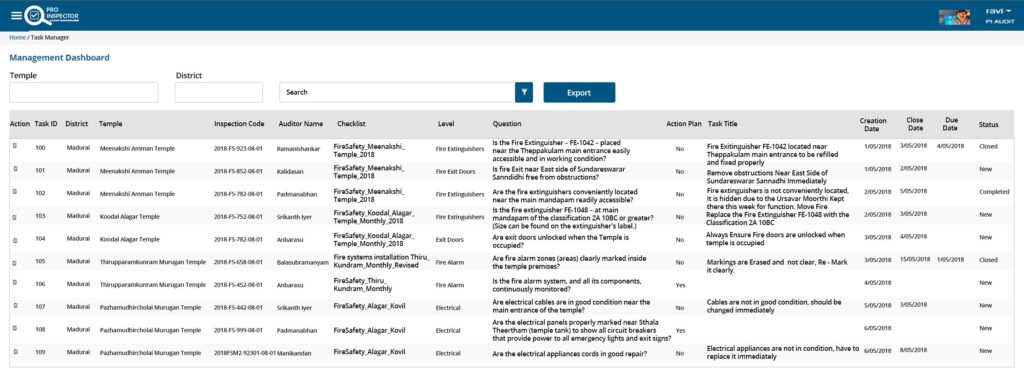

Scalable: Digitalization guarantees scalability. It is not just the large temples which will be covered, but all the 5231 (or more) temples under HR & CE and also not just Quarterly Audits but even Daily / Weekly / Monthly Audits
Economical: By adopting the digital approach, the total cost of the entire audit initiative will only be a fraction of cost of the conventional approach
Real Time Status: HR & CE official get a real time safety status of all the temples via Analytical Dashboards.
Non Conformity Tracking: Digital approach ensures Non Conformities are systematically tracked to closure without gaps
Reduced Manpower : Digitalization opens up the possibility of “Use the Local Staff approach” and this guarantees a huge reduction in manpower when compared to conventional approach.


Audits with Smart Phones
Real time Status via Dashboards and Analytics




| Cookie | Duration | Description |
|---|---|---|
| cookielawinfo-checbox-analytics | 11 months | This cookie is set by GDPR Cookie Consent plugin. The cookie is used to store the user consent for the cookies in the category "Analytics". |
| cookielawinfo-checbox-functional | 11 months | The cookie is set by GDPR cookie consent to record the user consent for the cookies in the category "Functional". |
| cookielawinfo-checbox-others | 11 months | This cookie is set by GDPR Cookie Consent plugin. The cookie is used to store the user consent for the cookies in the category "Other. |
| cookielawinfo-checkbox-necessary | 11 months | This cookie is set by GDPR Cookie Consent plugin. The cookies is used to store the user consent for the cookies in the category "Necessary". |
| cookielawinfo-checkbox-performance | 11 months | This cookie is set by GDPR Cookie Consent plugin. The cookie is used to store the user consent for the cookies in the category "Performance". |
| viewed_cookie_policy | 11 months | The cookie is set by the GDPR Cookie Consent plugin and is used to store whether or not user has consented to the use of cookies. It does not store any personal data. |
WhatsApp us